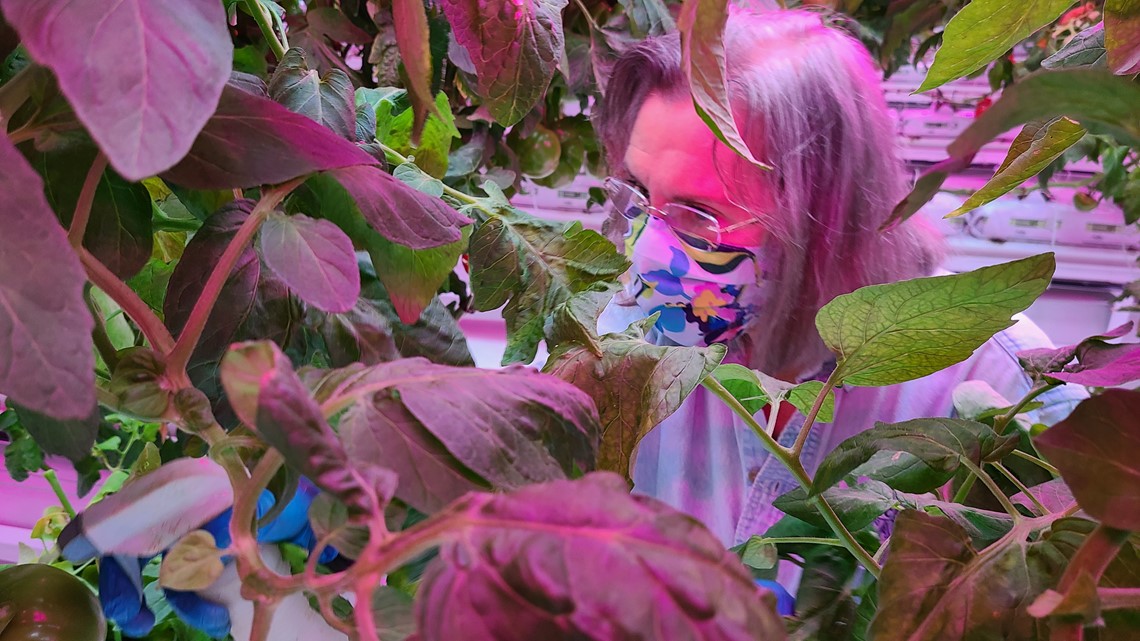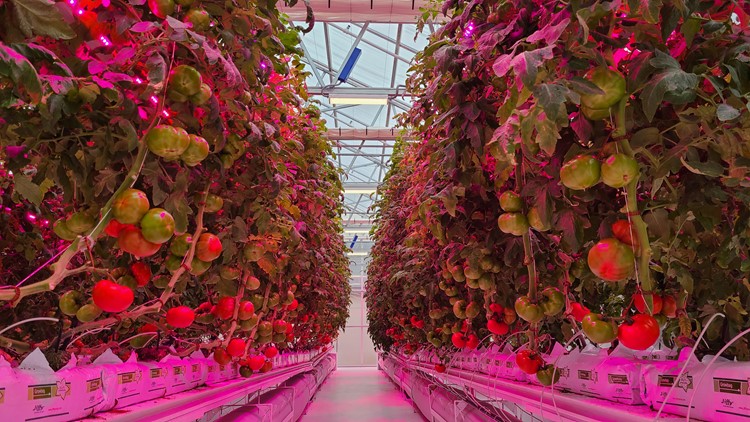The vines are 15 feet long right now, on their way to 50. As food banks across Dallas strive to feed thousands ravaged by the recessed economy, volunteers at the Soulfood Greenhouse are working hard to put fresh tomatoes on empty tables.
Just a few hundred feet from the roaring traffic of Central Expressway, across the highway from a Best Buy, the greenhouse flourishes from December to June. It nestles serenely along one east wall of North Park Presbyterian Church.
North Park Presbyterian focuses on serving the Vickery Meadow food pantry about a mile away. A few years ago Keri McCall realized the pantry’s clients had few fresh vegetables in their diets.
“They’d get staples like canned corn and macaroni and cheese," said McCall, the project manager at Soulfood.
Growing tomatoes hydroponically would be a way to fill that gap.


McCall and her husband, Shannon, both trained engineers, embarked on a plan to build a hydroponic greenhouse on North Park’s grounds with the church’s support. They had to gain zoning permission from the city and the knowledge to pull it off.
“It’s been trial by fire,” McCall says.
Her husband, who’s in the construction business, drew up the plans for the greenhouse. McCall handles the horticulture, which is not simple.
By the end of the season the plants — this year they’re a beefsteak variety known as Ribelski — will be growing a foot a week.
Using an ingenious system of movable single wire trellises, McCall and fellow volunteers train the plants to grow diagonally to fit within the greenhouse’s 20-foot ceiling.
“We can grow five times as many plants in this space as we could outdoors,” McCall says.
Since the project started, the church estimates Soulfood has produced 25 tons of fruit.
The carbon dioxide in the greenhouse air is concentrated to support the dense growth. Each plant is fed liquid fertilizer at its roots. And the whole tomato forest is bathed in pink light. McCall says that’s because plants pull the blue and red portions of the light spectrum to grow.
“By adding the pink light,” she says, “I can get 30% more production.”
Each day a new group of volunteers labors in the garden.
Bottom leaves must be pruned to coax the plant upward. Clusters must be trimmed to four tomatoes each to optimize fruit quality and as the fruit ripens, it must be harvested.
Each Wednesday, the church delivers its bounty to the Vickery Meadow Food Pantry and others using its “Reverse Food Truck,” which both gathers and delivers food to North Texas food pantries.


“This is my heart,” says Barbara Seale, one of the two dozen volunteers who help maintain the plants. “One of the very last things that Christ said was ‘feed my sheep’ and you know he said that three different times. So that tells me it's pretty darn important. So that's why I do this.”
Some days the pink light of the greenhouse is visible from the southbound service road of North Central Expressway, a beacon of goodwill in a hungry city.
Since the first fruit was planted, North Park estimates 150,000 servings of tomatoes have been distributed.



